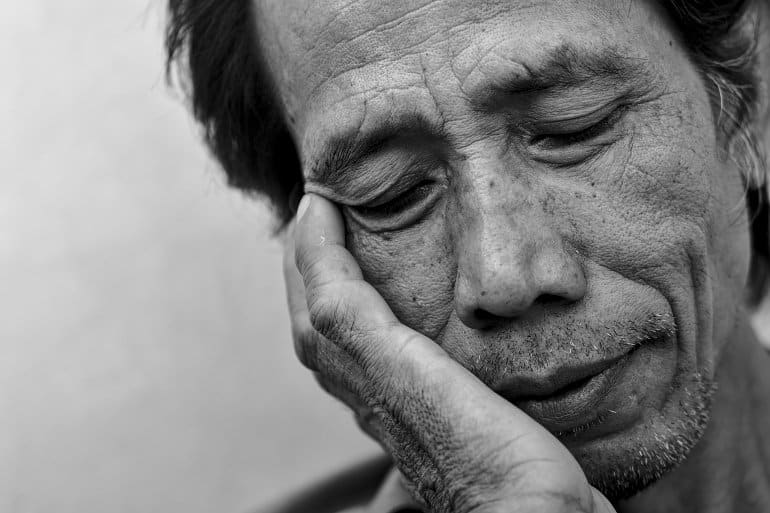Summary: Age and gender both appear to affect the relationship between state fatigue and brain activation.
Source: Kessler Foundation
To study the relationship between age and fatigue, Kessler Foundation researchers conducted a novel study using neuroimaging and self-report data.
Their findings were published online on May 9, 2022, in Frontiers in Human Neuroscience.
The authors are Glenn Wylie, DPhil, Amanda Pra Sisto, Helen M. Genova, Ph.D., and John DeLuca, Ph.D., of Kessler Foundation. All have faculty appointments at Rutgers New Jersey Medical School. Dr. Wylie is also a research scientist at The Department of Veterans’ Affairs War-related Injury and Illness Study Center at the New Jersey Healthcare System.
Their study is the first to report the effects of gender and age on both ‘state’ and ‘trait’ fatigue, and the first to report fatigue-related differences in brain activation across the lifespan and across gender during a cognitively fatiguing task.
“State” measure of fatigue assesses a subject’s instantaneous experience of fatigue at the time of testing; “trait” measure of fatigue assesses how much fatigue a subject experienced over a longer period of time, such as the previous four weeks.
Researchers collected data on trait fatigue and state fatigue from 43 healthy men and women aged 20 to 63 years. State fatigue was measured during fMRI scans while participants performed a cognitively challenging task.

The study was conducted at the Rocco Ortenzio Neuroimaging Center at Kessler Foundation, a specialized facility dedicated solely to rehabilitation research. They found that older individuals reported less state fatigue.
Dr. Wylie, director of the Ortenzio Center, commented: “Our neuroimaging data show that the role of middle frontal areas of the brain changes with age. Younger individuals may use these areas to combat fatigue, but this is not the case with older individuals. Moreover, these results suggest that women show greater resilience when faced with a fatiguing task.”
“This study is an important first step toward explaining some of the differences reported in the literature of fatigue, by showing that state and trait measures of fatigue measure different aspects of fatigue, and that age and gender both appear to affect the relationship between state fatigue and brain activation,” Dr. Wyle concluded.
About this fatigue research news
Author: Press Office
Source: Kessler Foundation
Contact: Press Office – Kessler Foundation
Image: The image is in the public domain
Original Research: Open access.
“Fatigue Across the Lifespan in Men and Women: State vs. Trait” by Glenn R. Wylie et al. Frontiers in Human Neuroscience
Abstract
Fatigue Across the Lifespan in Men and Women: State vs. Trait
Objective: Fatigue is commonly thought to worsen with age, but the literature is mixed: some studies show that older individuals experience more fatigue, others report the reverse. Some inconsistencies in the literature may be related to gender differences in fatigue while others may be due to differences in the instruments used to study fatigue, since the correlation between state (in the moment) and trait (over an extended period of time) measures of fatigue has been shown to be weak. The purpose of the current study was to examine both state and trait fatigue across age and gender using neuroimaging and self-report data.
Methods: We investigated the effects of age and gender in 43 healthy individuals on self-reported fatigue using the Modified Fatigue Impact Scale (MFIS), a measure of trait fatigue. We also conducted fMRI scans on these individuals and collected self-reported measures of state fatigue using the visual analog scale of fatigue (VAS-F) during a fatiguing task.
Results: There was no correlation between age and total MFIS score (trait fatigue) (r = –0.029, p = 0.873), nor was there an effect of gender [F(1,31) < 1]. However, for state fatigue, increasing age was associated with less fatigue [F(1,35) = 9.19, p < 0.01, coefficient = –0.4]. In the neuroimaging data, age interacted with VAS-F in the middle frontal gyrus. In younger individuals (20–32), more activation was associated with less fatigue, for individuals aged 33–48 there was no relationship, and for older individuals (55+) more activation was associated with more fatigue. Gender also interacted with VAS-F in several areas including the orbital, middle, and inferior frontal gyri. For women, more activation was associated with less fatigue while for men, more activation was associated with more fatigue.
Conclusion: Older individuals reported less fatigue during task performance (state measures). The neuroimaging data indicate that the role of middle frontal areas change across age: younger individuals may use these areas to combat fatigue, but this is not the case with older individuals. Moreover, these results may suggest greater resilience in females than males when faced with a fatiguing task.







